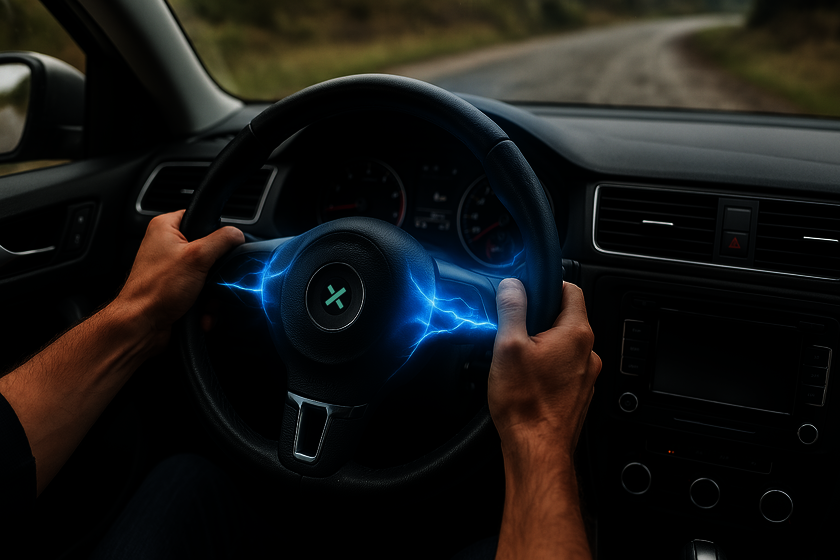
Force Feedback – The Future of Steering Precision
Why Force Feedback is Revolutionizing Vehicle Control
In modern automotive technology, Force Feedback (FFB) is becoming increasingly important. It allows drivers to physically feel road conditions, traction, and vehicle movements directly through the steering wheel. While traditional electric steering systems often provide an artificial or disconnected feel, Force Feedback restores a natural and intuitive sense of control.
With the transition to Drive-by-Wire systems, where mechanical connections between the steering wheel and wheels are eliminated, Force Feedback has become a critical component of vehicle control. It replaces the natural mechanical response with intelligent, adaptive forces calculated in real time.
What is Force Feedback? – The Technical Basics
Force Feedback is a human-machine interface technology that generates simulated forces using motors or actuators. These forces are based on:
- Road conditions (e.g., bumps, slipperiness, friction changes)
- Vehicle dynamics (e.g., steering input, lateral forces, tire slip)
- Vehicle speed (stronger feedback at higher speeds)
Modern Force Feedback systems use dynamic control algorithms to continuously adapt to driving conditions, enhancing the driving experience.
Where is Force Feedback Used?
Force Feedback is widely applied across various industries:
Gaming & Simulation
In racing simulators, Direct-Drive steering wheels generate precise resistance and vibrations to mimic road textures and vehicle behavior.
Aerospace & Aviation
Flight simulators and fighter jet control sticks use Force Feedback to provide realistic responses to aerodynamic forces and turbulence.
Medical & Robotics
In surgical robots, Force Feedback enables surgeons to feel textures and resistance during minimally invasive procedures.
Automotive & Drive-by-Wire
In modern vehicles, Force Feedback is essential for creating a precise steering feel. In Steer-by-Wire systems, where the physical link between the steering wheel and wheels is removed, Force Feedback ensures continuous road feedback and driving stability.
Why Is Force Feedback Essential for Drive-by-Wire?
As Steer-by-Wire adoption increases, Force Feedback becomes indispensable. In conventional steering systems, drivers feel natural feedback through the mechanical connection—Drive-by-Wire systems must artificially recreate this feedback to:
- Ensure safe and intuitive steering
- Simulate road conditions in real time
- Provide a consistent driving experience across different vehicle types
- Maximize steering precision and driver comfort
An advanced Force Feedback system can also adjust different driving profiles, from sharp, sporty handling to smooth, dampened feedback for relaxed cruising.
Without Force Feedback, Steer-by-Wire systems risk feeling unresponsive, unpredictable, or disconnected from real-world driving conditions. This makes highly precise, adaptive Force Feedback essential for maintaining control and confidence in Drive-by-Wire-equipped vehicles.
Conclusion & Outlook on Arnold NextG Force-Feedback Technology
Force Feedback is a crucial factor in the future of vehicle control, particularly in the field of Drive-by-Wire technology. It enhances safety, driving precision, and the overall user experience, ensuring that vehicles remain controllable and responsive under all conditions.
However, not all Force Feedback systems are created equal. While many providers rely on basic resistance-based systems, Arnold NextG has developed a patented Force Feedback technology that delivers an authentic, highly adjustable feel for road conditions and vehicle dynamics. With its customizable feedback settings, Arnold NextG’s system provides an unmatched balance of comfort and control, tailored to individual driving preferences.
In our next blog, we will explore the specific features and advantages of Arnold NextG’s Force Feedback technology in detail.


